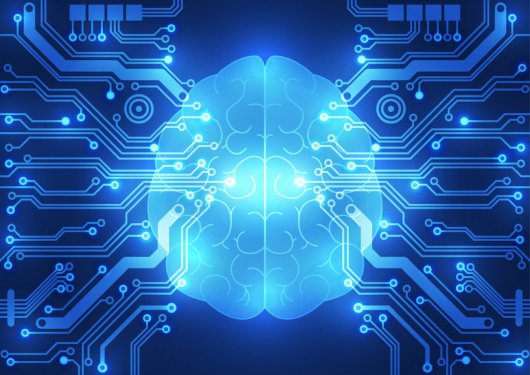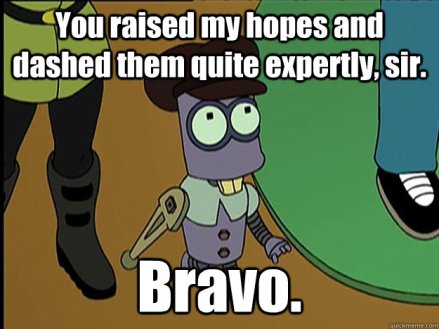Eclipse Phase is one of my favorite games and their second edition is something I’m struggling to wait patiently for. As such, you can expect to see a lot of my thoughts in upcoming weeks on some parts of the setting that I’ve always wanted to expand. I’ll also have fully-written game resources for you later but these are just my initial thoughts. And today’s initial thoughts are about makin’ babies!
In the case of Eclipse Phase I mean that literally. This semi-near-future science fiction setting heavily features genetic engineering and robotics so people are made in a very real way. I’m going to go over the specifics very briefly as you should check out the books (available free from one of the authors here) since these matters will make more sense and be more relevant then. Here’s the basics, though, using the game’s catchphrases.
- Your Mind is Software. Program It. In Eclipse Phase, a person’s mind can be affected like a computer with memories erased, personality quirks removed, and knowledge implanted.
- Your Body is a Shell. Change It. Minds can also be copied and uploaded (or “resleeved”) into a new body (called a morph or shell) to live as that thing now.
- Death is a Disease. Cure It. If your mind can be resleeved into a new body all the time, what’s to stop you from doing that any time your body gets too old? Nothing at all. Congratulations.
- Extinction is Coming. Fight It. Despite all of this, the population of the solar system is in a precarious position as some 90% of people got snuffed out in a war with massive AIs. Now transhumanity (which includes humans of every stripe, uplifted animals, and human-level AIs) are trying to repopulate and rebuild.
Which brings us to the topic at hand! If you’re trying to create more people in this setting where no one’s body is their own, how does that even happen? If you can just copy over a mind, couldn’t you make multiple copies of yourself? What happens when a human and an uplifted dolphin try to have a kid? How do Artificial Intelligence programs reproduce? All that and more is addressed below.
BiologicalsLet’s start with the more familiar stuff first… which is not to say “the familiar stuff.” Even straightforward human reproduction is different in this setting since people can jump bodies all the time. First off, you need to be in a biological body so folks in robotic bodies (synthmorphs) just can’t make a baby this way. Secondly, you need to be in a biological body that is capable of reproducing, which isn’t a guarantee. Some places are worried about population growth straining resources or they are trying some eugenics program and want to strictly control the development of all children. Still, assuming your morph is capable of reproducing (and many can change the reproductive organs over a few hours) then all you need is a willing partner to make a baby the old fashioned way.
 Image © Posthuman Studios
Image © Posthuman Studios
That’s not how most people do it, though. While sex is a common enough topic in the setting, when it comes to reproduction it seems most people go for an “exowomb” which is presumably some sort of growth chamber that fertilized embryos can be placed. These embryos can come from a combination of genomes (if it’s just one, that’s a clone) and presumably in the future you can combine more than two genomes (so that you have three or more biological parents) and even from different genomes (so that you could have a human-ish parent and a dolphin parent). Given the prevalence of morphs with non-human DNA from camels to seals, this shouldn’t be much of a problem.
Once these babies are born, what is life like for them? Presumably, they grow up just like babies of whatever body they are born into. A baby in a generally human body (most of the morphs out there) should probably develop into a human baby like any other, though maybe more comfortable with enhancements they’re born with or a better or worse ability to think in some way because of their bodies capabilities. For example, a baby born into a water-capable aquanaut morph would probably grow up with a much better ability to swim just because they’ve been doing it from birth. By the same token, a baby born into a morph with an echolocation implant will be far less freaked out than other transhumans when they are in a morph with echolocation.
UpliftsBabies born into bodies that are not human I would argue develop according to the brain structure of what they are born into. This means that uplift babies grow up with the same instincts and adaptations as any member of the uplifted species. In my book, this applies even if their parents aren’t uplifts: a child with two (or more) human parents sleeved into a neo-bonobo will grow up thinking and acting much like a neo-bonobo. This would require copying the baby’s mind and resleeving it right after birth, though, which (if you’ve never tried to get a baby to sit still) would be quite a trick. More likely you’d be considering this if one or more of the parents were uplifts and one or more weren’t, or if the two parents were from two different uplift species. Whatever structure the brain has, that’s what the baby will grow up as.
 Image © Posthuman Studios
Image © Posthuman Studios
How long does it take for these uplift-babies to grow up? Well, according to research it’s the brain development that slows down human children’s development. Because uplift species have more developed brains they will take longer to develop than non-uplifted relatives. Humans take twice as long to develop as close primate relatives so I would argue that’s an alright figure for “humanized” uplifts. This means that neo-primates would mature at about the same rate as humans (around 10-13), neo-dolphins would mature at 16 (even later than humans), neo-crows would reach sexual maturity at about 10 years (three times normal crows since they have farther to come). This means the length of their childhoods would be somewhat similar to humans’, even if their milestones and experiences are different.
AGIsThe outlier in all of this is the AGI, the Artificial General Intelligence. If they are sleeved into biological morphs they can reproduce just like other people but if they want to take a more digital approach they can try grafting. This is an option for everyone, in fact, who wants to create a digital baby instead of a physical one. Given the mental issues of the most famous example of this (an effort called Project Futura which led to a generation of emotionally disturbed weirdoes) this isn’t an attractive option to most.
Grafting, which comes from the gardening term, is the process of taking source code from multiple AGIs and combining them like geneticists combine strings of DNA to produce something new. AGI couples looking to reproduce (as opposed to a single AGI wanting to make a fork-branch of identical copies that then evolve into individuals) make forks of themselves and remove all of the memories from those, a process called topworking. The personality traits, coding quirks, and other bits of code are still around but these forks remember nothing from their originals’ lives.
Next, the AGIs mesh the two (or more) strains of code together and looks for areas of incompatibility: areas where two competing sections of code will interfere and create a failed or insane intelligence. The most common approach to dealing with incompatible sections of code involves designating one code strain as the rootstock and the other code strain(s) as graftstock. If an incompatible section deals with root cognition processes (spatial reasoning, logical processing, etc) then the code from the rootstock is used. If an incompatible section deals with personality elements (how social the baby-AGI will be, how analytical, etc) then the code from the gratstock is used, in a rotating pattern if there are multiple graftstocks.
 Digital Brain
Digital Brain
The process is long and arduous for AGIs (meaning that it can take several days of hyperfast coding to massage the code into a final product) but cutting corners can result in unstable or sociopathic offspring. When finished, the resulting AGI will have no memories and a unique personality that is made of elements from all the parent AGIs. It doesn’t take much convincing to show others that this is a child.
From Here…I’m happy to have written down the ideas that have been gestating for months (see what I did there?) and plan to build them all out in a pdf in the future. For now, though, consider this a little present for your Eclipse Phase game to deepen your character background, contrive complicated plots of family betrayals for your players, or just add more detail to the setting around you. Enjoy!
Advertisements Share this:




